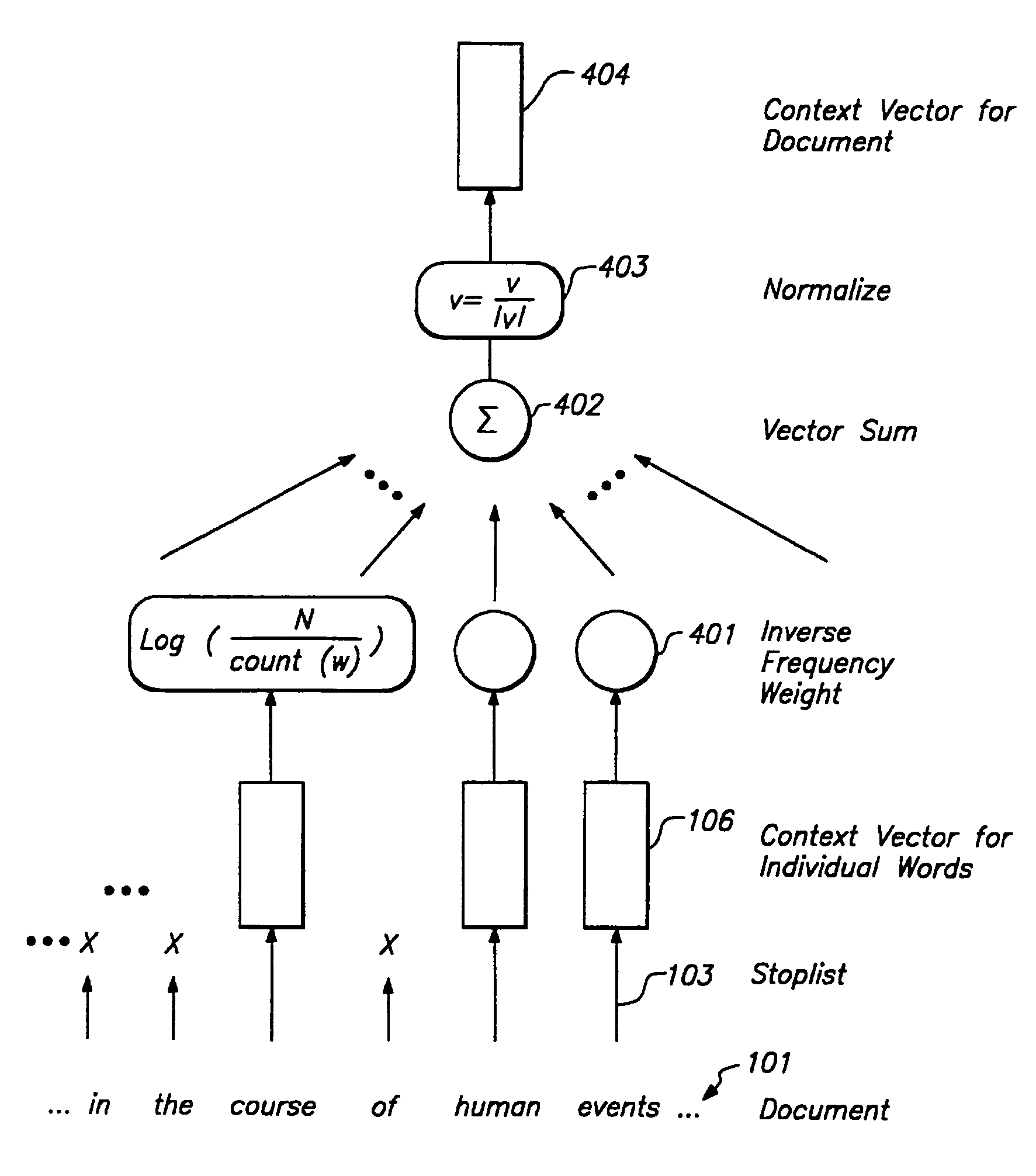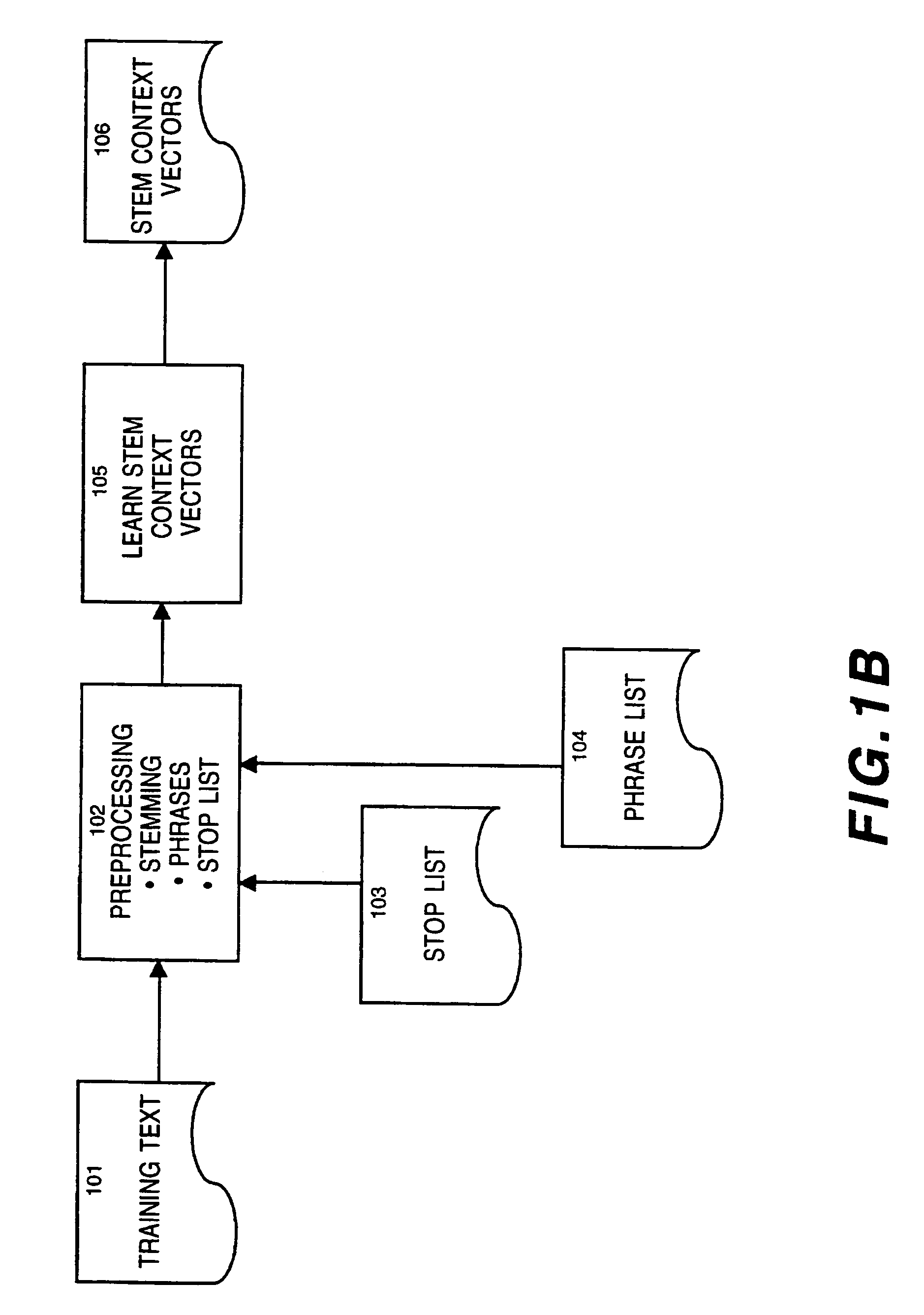Context vector generation and retrieval
a meaning-sensitive information and vector technology, applied in the field of vector-based meaning-sensitive information storage and retrieval systems, can solve the problems of requiring about 5 billion relationships, lack of meaning-sensitive systems, and inability to obtain and store information in a practical amount, so as to reduce the time required for searches, prevent information overload to users, and reduce search time
- Summary
- Abstract
- Description
- Claims
- Application Information
AI Technical Summary
Benefits of technology
Problems solved by technology
Method used
Image
Examples
Embodiment Construction
Section I. Context Generation and Retrieval
[0077]Referring now to FIG. 1A, there is shown a block diagram of a typical implementation of a system 100 in accordance with the present invention. The user supplies queries to system 100 via input device 111. Central processing unit (CPU) 107 runs software program instructions, stored in program storage 112, which direct CPU 107 to perform the various functions of system 100. In the embodiment illustrated herein, the software program is written in the C programming language and runs under the UNIX operating system. Each of these languages may be run on a variety of conventional hardware platforms. Data storage 109 contains a corpus of documents, as well as data describing context vectors. Alternatively, the corpus of documents (or other information items) may be remotely located, with electronic links to system 100. In accordance with the software program instructions, CPU 107 accepts input from input device 111, accesses data storage 109...
PUM
 Login to View More
Login to View More Abstract
Description
Claims
Application Information
 Login to View More
Login to View More - R&D
- Intellectual Property
- Life Sciences
- Materials
- Tech Scout
- Unparalleled Data Quality
- Higher Quality Content
- 60% Fewer Hallucinations
Browse by: Latest US Patents, China's latest patents, Technical Efficacy Thesaurus, Application Domain, Technology Topic, Popular Technical Reports.
© 2025 PatSnap. All rights reserved.Legal|Privacy policy|Modern Slavery Act Transparency Statement|Sitemap|About US| Contact US: help@patsnap.com



